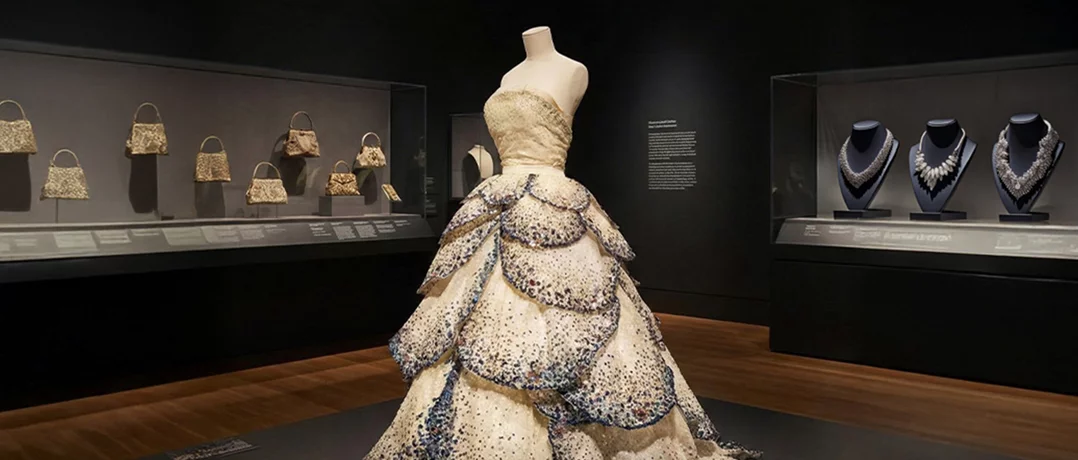Christian Dior’s 1949 Junon gown is celebrated as a couture masterpiece, famed for its sculptural, hand-crafted petal design and enduring influence on fashion.
Dior’s 1949 dress enters art history

Few gowns in the history of fashion have achieved near-mythical status. Christian Dior’s Junon dress unveiled for Fall/Winter 1949 is one of them. More sculpture than garment, the gown stands today as a symbol of Dior’s golden age and a benchmark for craftsmanship that the modern industry seldom reaches.
Named after Juno, the Roman goddess of marriage, power, and femininity, the dress was designed as a vision of divine beauty. Its most iconic feature, a skirt composed entirely of layered, ombré silk-tulle petals, evokes the shimmering plumage of a peacock, Juno’s sacred animal. Each petal fades from deep midnight blue to iridescent sea green, creating the illusion of movement even when the dress stands still.
The craftsmanship
The gown’s construction remains one of the most demanding examples of haute couture technique. Every petal was hand-cut, hand-shaped, hand-dyed, and meticulously beaded by René Bégué, known as Rébé, the legendary Parisian embroiderer whose atelier produced some of the most sophisticated embellishments of the 20th century.
Rébé’s work on Junon is often described as “painting with beads.” Sequins were individually applied to mimic feathers; the gradients were dyed layer by layer; and the petals were assembled with millimetric precision so they would flutter like real plumage.
Today, the original Junon dress is preserved at The Metropolitan Museum of Art in New York, where it remains one of the Costume Institute’s most cherished pieces. Fashion historians frequently cite it as the archetype of “mid-century couture fantasy”, a moment when craftsmanship and imagination reached levels rarely equaled since.
A modern recreation and its controversy
In 2023, Dior reinterpreted Junon for Natalie Portman, who wore it to the Cannes Film Festival. The modern version featured a simplified petal structure and lighter embellishment. While beautiful, many fashion critics argued that it lacked the breathtaking weight, drama, and couture audacity of the 1949 original. It was a reminder that Junon belongs to a different era, before commercial constraints, red-carpet practicality, and the fast pace of contemporary fashion.
Junon’s legacy
More than seventy years later, Junon continues to influence designers, stylists, and artists. Its silhouette is echoed in contemporary couture; its color palette resurfaces on runways; its craftsmanship is studied in design schools worldwide. Above all, Junon represents something the world rarely sees: a dress that transcends fashion and becomes art.
In a time when luxury houses compete for virality and speed, Junon is a reminder of what couture once meant and what it still aspires to be. A masterpiece born from imagination, mythology, and the hands of artisans who believed in beauty without compromise.



